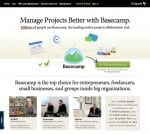How to engage your site visitors with your brand in 7 steps
Ever been to a web site and wondered 'Why am I here?', 'How does this help me?' or 'Does this site give me what I need?'. And then left shortly afterwards?
A succinct online value proposition is a crucial way to hook new visitors into your site and brand in those crucial seconds (not minutes!) that a visitor is deciding to click-on or leave your site. It also encourages continued usage and advocacy about your site, so it's vital to an effective web strategy.
An online value proposition is closely tied to your brand positioning which answers questions like: who we are, what we offer, which markets do we serve, what makes us different? But the OVP extends this the difference is that it identifies the reasons why customers will click on, return, register or buy from your site and ideally feel motivated enough to share their experience - the last point being key in an age where the customer increasingly defines the brand.
It should state the intrinsic benefits a visitor will get from the the site, content, web service or functionality - and how that ties to your overall product or service. It cannot simply be your brand promise or a more general customer value proposition stuck online, since that misses the point that someone is on your site now and asking themselves questions such as "what's in this for me?".
Why do we need an online value proposition?
- Being good is a given, with time short new visitors being outstanding is the aim, a strong online value proposition hooks;
- it distinguishes a web site from that of its competitors (a core web site design objective);
- it helps provide a focus to marketing efforts - to be clear about the purpose of the site (why are you driving people to the site?);
- if the proposition is clear it can be used for PR and word-of-mouth recommendations may be made about the company;
- it can echo the wider propositions of a company or its product(s)
If your company's site does not live up to the online value proposition, new visitor expectations will not be met and they will be unlikely to come back, loyal customers might leave. It is better to over-deliver on the online value proposition than under deliver against promises you can't keep - remember that you generally have only one opportunity to impress.
-

-
Ted makes it clear what you’ll find on their site
-

-
Basecamp push towards the product, encouraging purchase
-

-
IBM use a large media panel to encourage site exploration
Our 7 steps to help you get started or refine your existing proposition:
- Review potential OVPs. Unique value propositions are created in two phases: Phase 1 is where you internally (yourself, or within your senior management team) decide on the unique benefits of your web site or service, and Phase 2 is crafting that uniqueness into an outbound message to your market - a confident, assured benefit statement to your market.
- Select your target audience. Garner research if you don't have it already to inform you who are they are. Build simple personas if you don't have them (pen portraits that are specific to the site usage) that really dig into what the site must deliver - find the common needs of the relevant personas you must engage online
- Research your audience. Ask your market, those personas, what they need and want. Building your unique differentiation in your market is far more likely when you become involved and understand your customers, tune-in to their triggers - obtain feedback on early concepts and ideas and have a good understanding of how competitors are positioning themselves in your market.
- Benchmark OVPs. Look outside of your industry. Study successful companies of all types. Seek to understand their online value proposition. How are they different in the market?
- Define your OVP . Select a strap line and more detailed value messages you may see listing features or on an about page. But remember that your online value proposition is more than text - think about images (large, small, masthead or a whole wall-paper backdrop), also video or animation to help engage and entertain. A well designed navigation can define the OVP too.
- Communicate OVPs. Which messages and channels will you use to communicate OVPs. OVPs can be communicated in the search results, in catalogue and in print ads. Messaging should engage by keying into the customer's experience, and emotions the intangibles can be powerful Being the best in price, selection or shipping time is often not enough to separate you from your competition. What can you do with your idea, knowledge of your market to really improve their lives, health, financial situation, status, prestige, etc...?
- Deliver, review and improve. Make sure you are in a good position to deliver on your unique value proposition. It's not enough to create the best UVP statement only to give way to someone else who could execute better. Know your strengths and build your UVP out from there. The "Online Value Proposition" or OVP should reinforce the core brand proposition, and also shows what can a visitor get from your online services that they can't get from you offline or from competitors.
Although this guide has stepped you through a website OVP, remember that different digital channel can have and will be more effective if they have their own OVP to encourage usage, think through the OVP for your Facebook, Twitter, enewsletter and mobile offerings.
We hope that's useful?! Which brands, sites do you think have effective OVPs?









